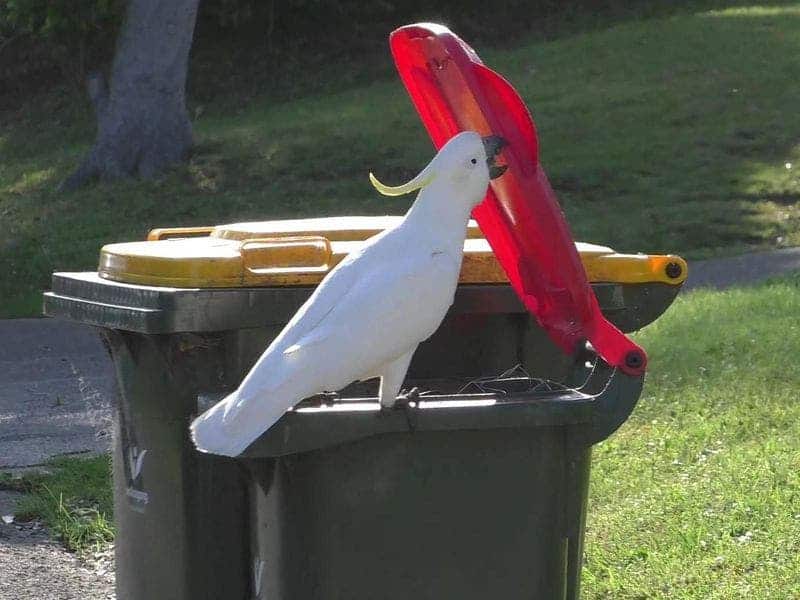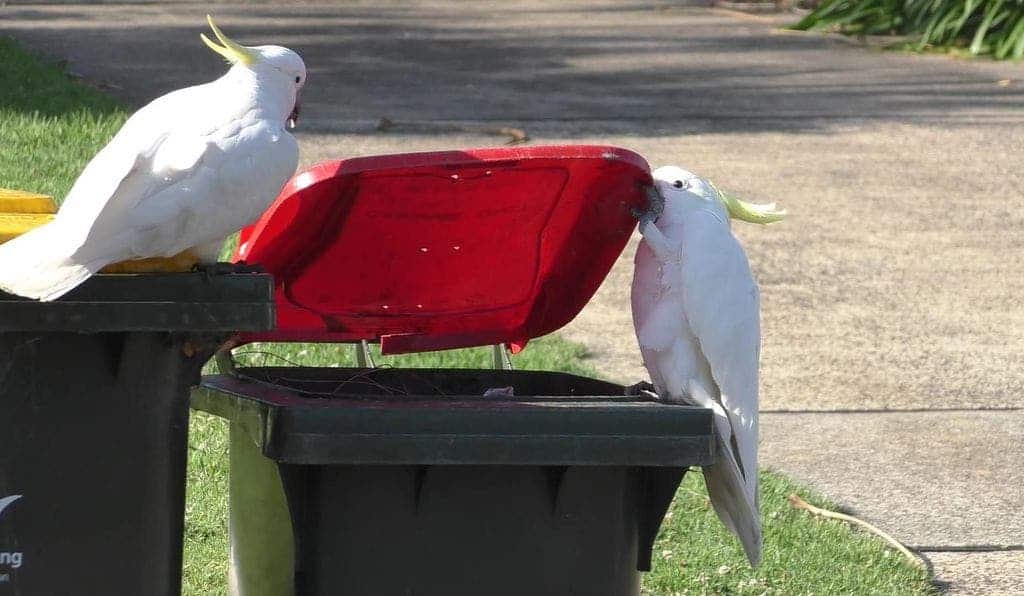
Cockatoos are usually cherished and loved due to their unique personalities — but not in affluent Sydney suburbs where the parrots are ransacking trash bins, spreading litter throughout the neighborhood. Considering how clever they are at manipulating objects, it’s not that surprising to learn that the parrots managed to learn how to open the lids of bins to reach food. What turned out to be novel, though, was that this behavior was transferred to other cockatoos, who observed their pioneering trash-ransacking peers and then learned the ropes so they could do it by themselves next time.
It’s a very rare instance of social learning among birds, researchers say. Not only that, different groups of birds have developed their own unique techniques for foraging from people’s bins, which involves animal culture.
‘Your trash? Naaah, that’s my dinner,’ says hungry cockatoo
Reports of cockatoos opening bin lids and stealing whatever they may find appealing inside can be traced to 2014. Since then, this behavior has spread to hundreds of birds across suburbs in New South Wales, Australia.
No one knows what bird or group of cockatoos started this trend, but what’s clear is that it’s widespread.
In any event, scientists’ attention was piqued, and soon enough ecologists traveled to these suburbs to see these avian raccoons with their own eyes. Over the course of three years, an international team of researchers led by study first-author Barbara C. Klump, a behavioral ecologist at the Max Planck Institute of Animal Behavior in Germany, made over 160 direct observations of trash-foraging behavior among sulfur-crested cockatoos (Cacatua galerita) over the course of three years. They also had some valuable local observations and surveys at their disposal thanks to a citizen science project involving 1,322 people across 478 suburbs in Sydney and Wollongong.
This monitoring showed that bin foraging increased substantially over time. In 2018, just three districts had cockatoos going through their trash. But by 2019, 44 districts had reported this behavior. This behavior spread more quickly to neighborhoods adjacent to areas where bin foraging was common than in farther away areas, suggesting that the behavior was transferred through social learning.
Watch and learn

According to the researchers, the birds employ five distinct moves to open the bins. First, they use their beaks to pry the lid of the container. Then, while still holding the lid with their beaks, the birds walk along one side of the container and with a swift motion they flip the lid over.
Some birds will step or hold their heads differently, but the process is more or less the same among all birds — at least those who acquired the skill since not all cockatoos were able to learn the right moves to open their own bins, despite some persistent efforts. Only eight percent of the birds that were tagged and directly followed by the researchers became skilled enough to open the lids on their own, mostly heavier males.
Since not all birds were able to catch on, the researchers see this as evidence against the notion that this behavior could be pinned to some genetic predisposition, further reinforcing the idea that social learning is at play. Moreover, the variation in lid opening technique among different groups of birds, as well as individual birds, alludes to regional subcultures.
Although social learning and cultures have been reported before in primates, whales, and some songbirds, this behavior is exceedingly rare in the animal kingdom, further cementing cockatoos’ status as some of the brainiest birds in the world.
The findings were reported in the journal Science.









